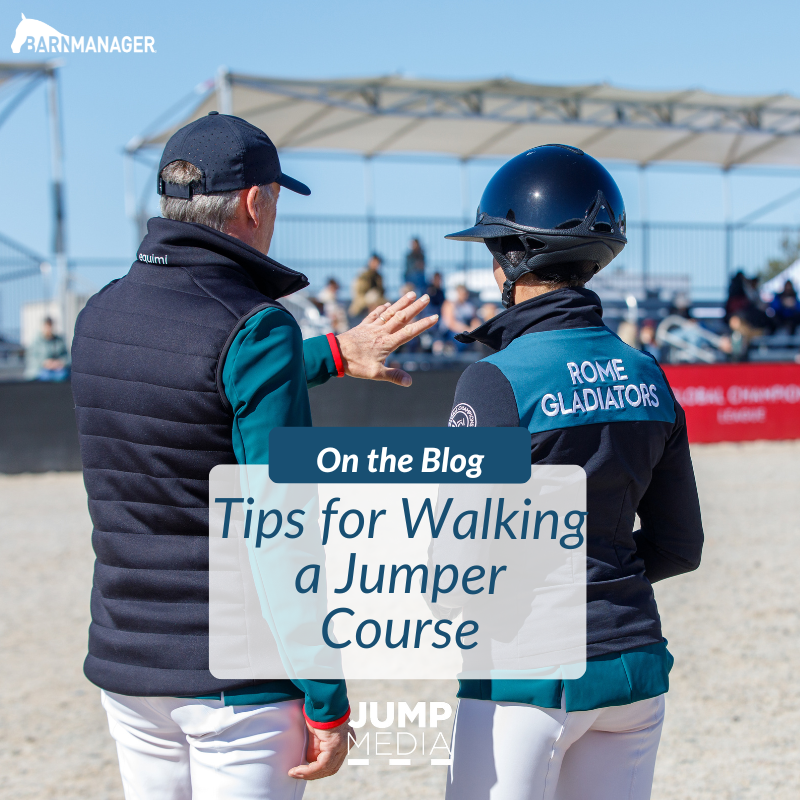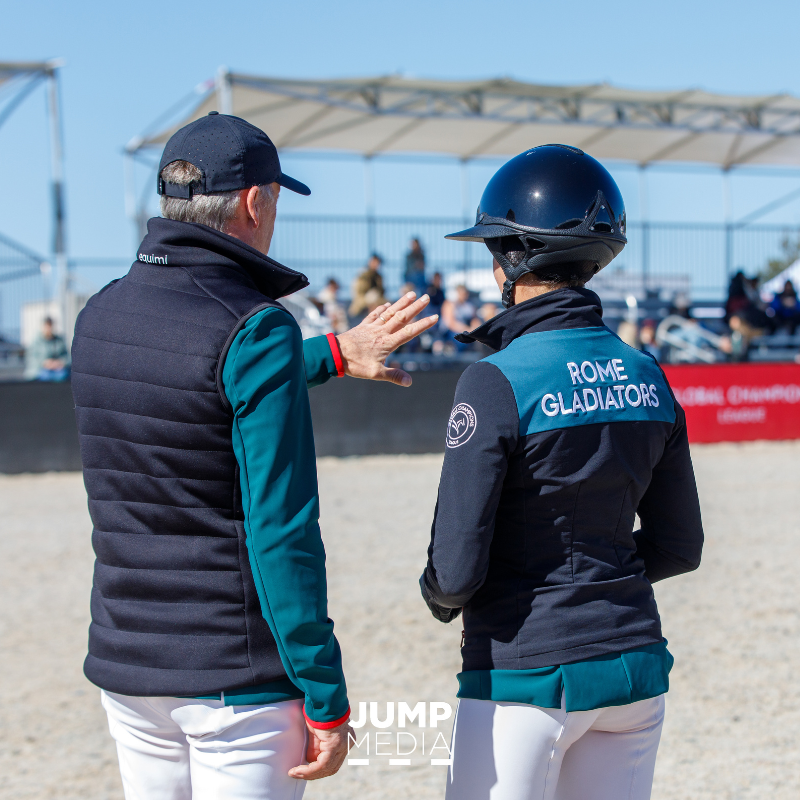
Tips for Walking a Jumper Course
Jumper courses are often technical and include lines where riders have several options for track and striding. For this reason, understanding how to effectively walk a jumper course to come up with a successful plan for the show ring is essential. BarnManager spoke with U.S. Olympic silver medalist and international grand prix rider Peter Leone to learn his tips for walking a jumper course.
Know the Format
The first step to walking a course is knowing the type of competition. When I walk a course with a student, I always ask them what kind of class it is, and I expect them to know the answer. Knowing the format tells us how we need to walk that course in order to strategize how to win and be competitive. For example, I’m going to have a different plan for a speed class than I would for a class with a jump-off.
Make a Strategy Based on Your Horse
It is important to take into account your horse’s strengths and weaknesses during a course walk. When I walk a course with a student, and it’s a jump-off or speed class, I’ll explain the striding, turns, and angles the winner will do. We then take that information and personalize it to their horse based on its strengths and weaknesses. Strengths to think about could be the horse is brave, quick, slow with a big stride, or careful. On the other hand, we also consider if the horse is spooky, jumps hard to the left, or is very aware of and drawn to the in-gate.
Anticipate How Your Horse Will React to the Jumping Questions Being Asked

Photo by Jump Media
It is important to consider how your horse will react to different jumps in the arena. If you have to jump a spooky wall heading into the end of the ring, ask yourself how you think your horse will react to that. If your horse is the type to shrink back and be hesitant about boldly approaching that fence, then understand that jump could be a problem and come up with a plan for how you, as a rider, can help your horse. For example, I would make sure to get straight to that jump, have a short, active canter, good connection, and also let my horse see it during our entrance. Another fence you may have to consider during a course walk is a plain, airy plank. The careful, attentive horses will pay attention to the plank, but the big brave horse will not give it the same amount of respect. So, when you are walking the course make sure to think about what you can do to make your brave horse pay attention to that jump and give a good, clean jumping effort.
Jump location is another important factor to look at during a course walk. Anticipate how your horse will react to a jump going toward the in-gate versus one going away from the in-gate. Look for jumps on tricky angles or blind turns and come up with a plan for how you can give your horse the best chance of jumping the fence clear.
Look at Footing Conditions
The course walk gives you an opportunity to see what the footing conditions are like. You can identify if the ground has a nice texture, if it is firm, or if it gives way on the turns. At the majority of competitions now the footing is so good that horses’ strides are longer than we expect. Oftentimes when we walk a line and think it will ride long, it ends up riding normally. This is because of how much the footing has improved over the years, so it is something we should think about when walking a course.
Pick Spots To Save Time
During your round, you will not jump every fence dead center, especially when you are going against the clock. When you are walking the course, you should pick particular spots on the fences that you aim to jump. When walking a broken line or a line to a line, always walk a 12-foot stride and the direct track first as opposed to the wider bending track. A direct line will help save time so only put big bends in your broken lines if you have to. Identify other places where you can cheat the clock and be under the time allowed. This might be turning on landing and galloping over to the next jump or making a tighter turn to a jump that is friendly and relatively low risk in terms of having it down. If you can cheat the clock in certain places, then you can take time to those trickier obstacles or combinations that need a more respectful approach.
Make a Smart Entrance
While walking your course you should also consider your entrance. Preloading, when allowed, and making a smart entrance is to your advantage. When you enter the ring, make sure to let your horse see those critical fences or possible problem areas in the course. When deciding your entrance, you should factor in your particular horse and what you think would be most beneficial for them to see such as a combination or spooky oxer.
No matter the height or level of track you are riding, coming up with a solid and effective plan during the course walk will go a long way to helping you have success in the jumper ring.
Have questions about utilizing BarnManager or want to give it a try for yourself? Request a live demo here!